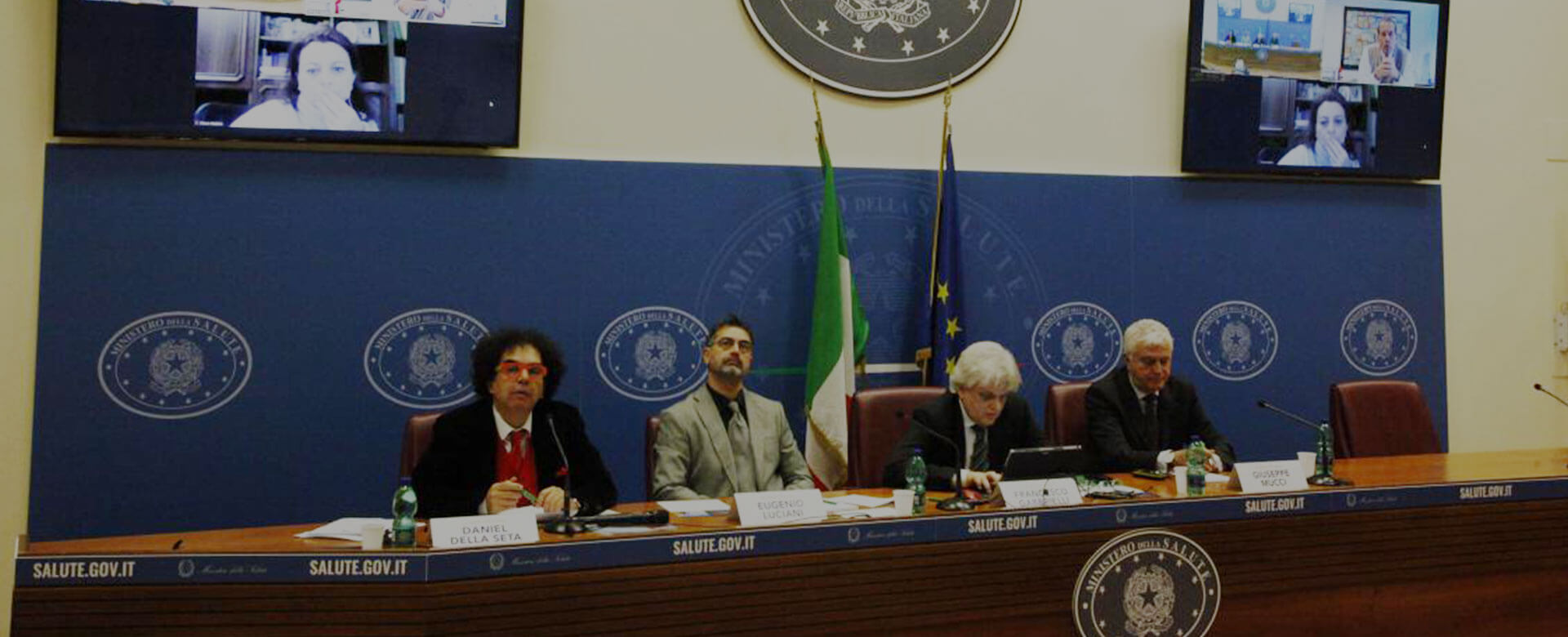With Digital Health, the future is now. This is the message from the institutional meeting “Digital Health: new landscapes for General and Specialist Medicine”. The event highlighted the advantages of new technologies, including predictive screening that are already in place, for both the health service and the patient. Giuseppe Mucci, CEO of Bioscience Institute, spoke on the companies investing in the sector.
The meeting was on December 16th, at the Italian Ministry of Health in Rome, as the last event of the cycle under the theme: “La Sanità che vorrei” (Health, as I would like it to be), promoted by the scientific society SIMIT (Italian Association for Infectious and Tropical Diseases), together with SIGOT (Italian Association of Geriatrics, Hospital and Territory), SIMG (Italian Association of General Medicine and Primary Care, SIT (Italian Association of Telemedicine). The subject in the spotlight is “Digital Health: new scenarios for General and Specialist Medicine”. Mucci, President of Bioscience Institute, spoke at the second of five sessions: “The experience of the companies investing in Digital Health.
The participant concluded that “Digital Health” does not only mean robotics, precision surgery, personalized medicine, artificial intelligence, but also a revolution in the logistics of daily interventions with repercussions on diagnosis, prognosis and therapy.
The role of telemedicine
Being Digital Health made up of several elements, in order to combine the scientific literature with the practical experience it is mandatory to involve professionals from different backgrounds and with long experience, who, as highlighted by professor Antonio Vittorino Gaddi, SIT president, also act as «a glue between public and private realities. From this point of view», Gaddi added, «SIT is already very active: a few weeks ago, they promoted a framework agreement together with the CINECA Interuniversity Consortium [the principal computational center in Italy], the National Institute of Nuclear Physics, the Istituto Superiore di Sanità to bring together different forces on health issues. Furthermore, in March 2023, on the occasion of the International Bologna Consensus Assembly on Telemedicine, a joint document will be announced between doctors, companies, and institutions to capitalize on this commitment».
The elements of Digital Health are often interpreted by telemedicine, which however represents only one facet of it, perhaps the most evident aspect of a larger and more complex mechanism.
The acceleration is not always uniform
The application of new health technologies is a complex process, made up of algorithms, artificial intelligence, and modern software platforms, subject to certification of suitability. The first result that both clinicians and citizens will benefit from will be a strengthening of local medicine, starting from the patient’s home through monitoring, prevention and physical support systems.
The new Coronavirus pandemic has boosted the use of technology in the healthcare field. However, this important change has not always occurred in a uniform and coordinated manner. In order for these tools to become reality, and for the funds of the National Recovery and Resilience Plan to be properly invested, a synergy between the various stakeholders involved in this process is essential. National and local institutions, scientific associations, general and specialist medicine, and companies will have to collaborate to put together the necessary ingredients to start a virtuous process, like a regulatory framework, the latest generation know-how, scientific knowledge, and so on. Efforts will have to be concentrated on a few areas such as:
- remote healthcare activities;
- new digital systems for telemedicine, digital therapies, telerehabilitation, and personalized medicine;
- new methods for analyzing the complexity of biological systems;
- new digital systems for conducting clinical trials.
A very successful and replicable example of technology applied to healthcare is the one created at the Tor Vergata General Hospital (Rome). As explained by Professor Massimo Andreoni, SIMIT Scientific Director, here, «a platform has been developed through which all the factors useful for decreasing the [antibiotic] resistance of germs are inserted. It is a very ambitious project, the technology helps understand which factor has caused the increase in resistance. It is already operating and will be able to provide important elements for understanding this phenomenon and for providing tools on how to combat it».
A revolution for the family doctor too
Family doctors will also be deeply involved in the Digital Health revolution. From 2024, clinical software will have to be certified under European regulations in order not to incur in penalties. In fact, the European legislation that was adopted in Italy on August 5th, 2022, imposes from May 2024, a Ce-MDR certification to software to be used by medical personnel, as in the case of any other medical device, such as an electrocardiograph or a CT scan. The level of complexity will be different, because producing MDR software, certifying it according to the standard, and allowing it to evolve, has an immeasurable level of industrial complexity. However, it will no longer be possible to use tools that are not aligned with these indications in professional practice, or penalties could be impounded on both the medical users and the software producers themselves.
In summary, it will be necessary to have class IIx certified softwares, which involves a very complex production process and the intervention of a third party notified as certifier. As highlighted by Giorgio Moretti, President of Dedalus Group (the main supplier of clinical and diagnostic software in Europe), «the evolution of the tools is designed and updated in accordance with the needs of the scientific community. With these tools, unique in the world, clinicians and nurses are guaranteed the real availability of medical knowledge applied during daily activities, offering solutions in line with the new regulations».
For a constant update on Bioscience Institute’s services and initiatives, please visit the website www.bioinst.com. For further information, feel free to contact us at info@bioinst.com; our biologists will answer your questions with no committment on your part.


